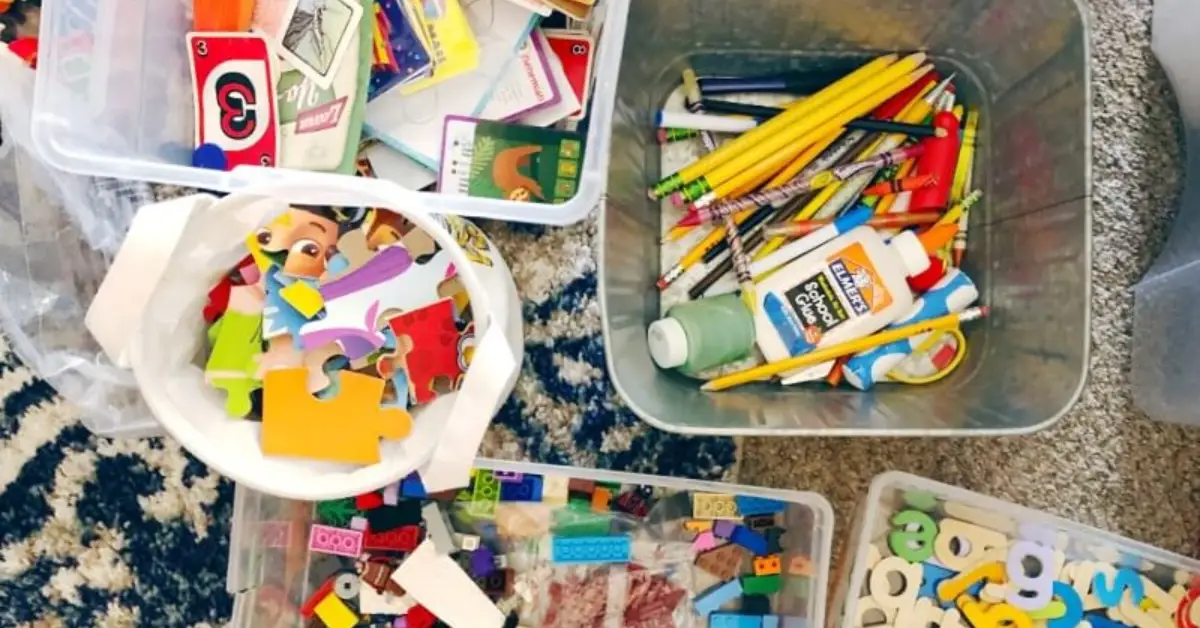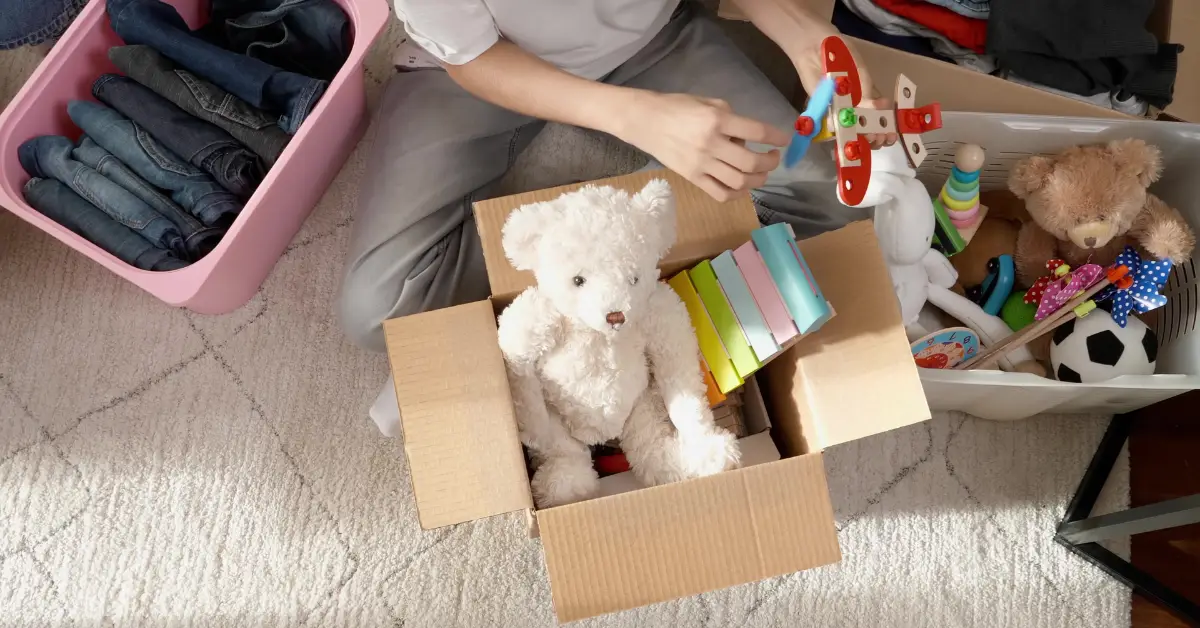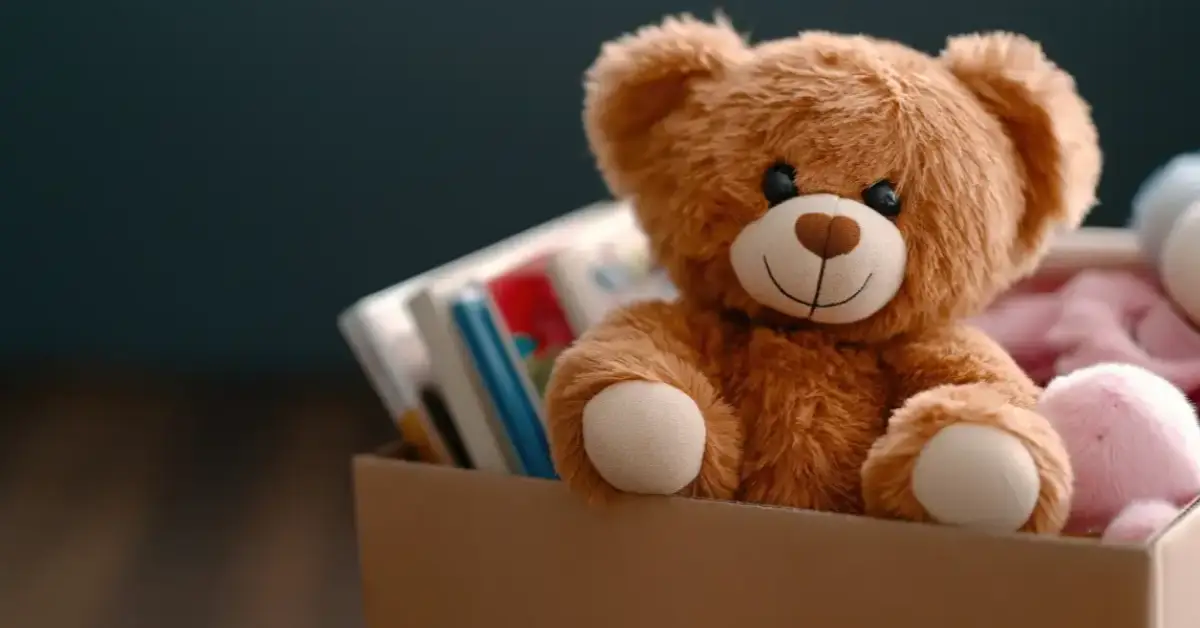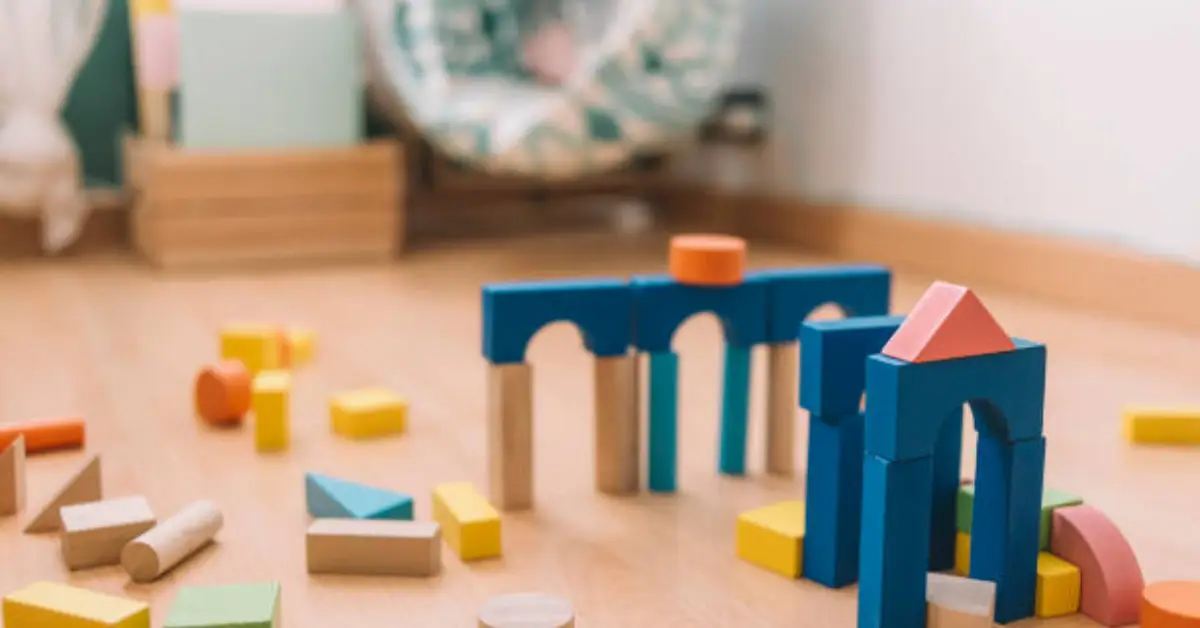10 Clever Ways to Declutter Toys Without a Meltdown
I’ve spent years juggling a house that looks like a toy store exploded and still wanted my kids to feel safe and happy in their space. If you’re here, you’re probably tired of stepping on Lego, wading through stuffed animals, or losing your mind every time friends come over. I get it — decluttering toys feels personal and emotional, not just practical.
You don’t have to choose between a tidy home and your child’s feelings. In this piece I’ll walk you through ten realistic, kid-friendly ways to declutter toys — practical steps that actually work and keep the peace. I’ll show you how to set limits that don’t feel mean, how to rotate and store toys so they stay interesting, and how to involve your kids without tears.
These aren’t one-size-fits-all rules. I’ll point out common mistakes I’ve seen, the little mindset shifts that stop you from re-buying clutter, and quick wins you can do this weekend. Along the way I’ll reference simple evidence and parent-tested tactics so you can make choices that feel right for your family.
Ready to clear space without drama? Let’s start with why toy clutter happens — and what actually changes the game.
Why Toy Clutter Happens — And Why It’s Worth Tackling
I used to think toy clutter was just part of parenting — that scattered blocks and stuffed animals meant my kids were having fun. But over time, I realized the chaos wasn’t helping anyone. The truth is, most families simply have too many toys.
A study highlighted by Rich in What Matters found that children actually play more creatively and for longer periods when they have fewer options. When every shelf and bin overflows, kids don’t know where to start — it’s classic choice overload. Instead of sparking imagination, too many toys cause distraction and surface-level play.
The scale of the issue
If you’ve ever walked into your living room and wondered, Where did all this come from?, you’re not alone. Between birthdays, holidays, and random “just because” gifts, toys pile up fast. But having more doesn’t mean better play — it often means:
- Shorter attention spans (kids jump from toy to toy).
- Overwhelm (they don’t even know what they own).
- Less creativity (no time to dive deep into one activity).
Emotional & practical impacts
The clutter isn’t just physical. It weighs on everyone in the house.
- For parents: there’s constant cleanup, frustration, and guilt. You feel like you’re failing at keeping things organized.
- For kids: it’s sensory overload. A messy environment can make them anxious or irritable.
- For the home: clutter eats up space that could be used for play, reading, or family time.
As The Declutter Hub explains, it’s not really about storage or bins — it’s about the emotions tied to “stuff.” Parents hang onto toys out of guilt or sentimentality. Kids hold on because it feels like security. Recognizing that helps you approach decluttering with empathy, not frustration.
Understanding your child’s perspective
From your child’s point of view, every toy holds a story. That stuffed rabbit isn’t just old; it’s the one they cuddled during a thunderstorm. To them, decluttering can feel like loss, not organization.
That’s why this process needs patience and honesty. Instead of saying, “We’re getting rid of things,” try:
- “Let’s keep the toys that make you happiest.”
- “We’re making space so your favorites can shine.”
- “You get to decide what stays.”
Framing it that way shifts decluttering from punishment to empowerment.
How to Start — Getting Everyone On Board

If decluttering has ever turned into a power struggle, this section is your reset. The key is not to surprise your kids with sudden decisions but to make them feel part of it from the start.
Frame the conversation with your kids
I like to start with honesty: “Hey, I noticed we’re running out of space for your favorite things — how can we fix that together?”
This makes kids feel involved instead of controlled. It turns the project into teamwork, not a threat.
A few simple reminders:
- Avoid “we’re throwing this away.” Say “we’re choosing what stays.”
- Keep the tone light. Maybe turn on music or make it a “toy detective” game.
- Praise their choices — it builds confidence and cooperation.
Set clear, simple rules and boundaries
Rules create structure so decisions feel easier, not harsher. You can say:
- “We’ll keep what fits in this bin.”
- “If you haven’t played with it in months, let’s think about another child who might love it.”
- “Broken toys go to the ‘fix it’ pile — everything else gets a home.”
Having boundaries removes the emotional tug-of-war because you both know what to expect.
Schedule a fun “toy audit” session
Don’t try to tackle everything in one go — that’s how overwhelm sets in. Instead:
- Block a short, dedicated time (like 30 minutes on a weekend).
- Make it fun — use timers, music, or small rewards after each session.
- Work in categories: soft toys first, then puzzles, then art supplies.
- Celebrate progress. Take before-and-after pictures to show your kids how their effort made a real difference.
If you’re just beginning your decluttering journey, start small — sometimes tackling one area at a time builds momentum. Check out my guide on decluttering your home in 3 simple steps with the 1-3-5 rule — it’s a quick system to help you prioritize what really matters before diving deeper.
When everyone feels included and the process is simple, decluttering becomes less about “cleaning up” and more about reclaiming space for play.
So now that we’ve set the mindset and the groundwork, let’s move into the practical part — how to actually start sorting and simplifying those toys without losing the joy.
1. Dump It All & Take Stock
When I finally faced the mountain of toys in our house, the most effective first step wasn’t a fancy organizer or new bins — it was a big, honest dump. Piling every single toy into one space is the fastest way to see how much you’re really dealing with.
Spread them all out — living room, playroom, or even the hallway if needed. Once you see the sheer volume, it hits you: most of these toys haven’t been touched in months. That visual shock makes it easier to make intentional choices later.
Gather every toy into one visible space
Experts often recommend this method because it helps you stop underestimating the clutter. You can’t make smart decisions until you see everything together. Plus, it turns sorting into a team effort instead of a nagging task.
Involve kids in categorizing what they see
When kids help, it stops being a confrontation. Hand them small jobs: group stuffed animals, stack puzzles, or line up cars. You’re giving them control, not taking toys away — and that mindset shift changes everything.
Quick favorite-to-keep vs rarely used pile
Once the toys are all visible, go for quick wins. Ask your child:
- “Which ones do you play with every day?”
- “Which ones haven’t been touched for a while?”
- “If we could only keep five, which would you choose?”
This first round doesn’t have to be perfect. It’s just to warm everyone up and reveal patterns — usually 80% of toys are in the “rarely used” pile.
2. Sort Toys by Type, Use & Sentiment

Now that you’ve seen the big picture, it’s time to bring order to the chaos. Sorting turns a messy pile into manageable sections and helps you make decisions based on logic, not emotion.
Categories: broken/incomplete; outgrown; rarely used; beloved/high-play
Start by breaking everything into simple groups. Keep a few boxes or baskets handy for:
- Broken or missing parts — these go straight to “fix” or “discard.”
- Outgrown — toys they’ve aged out of but may still hold memories.
- Rarely used — test whether these can be rotated or donated.
- Beloved/high-play — toys that see daily action and genuine joy.
You’ll be surprised how quickly this step clears mental fog.
Use clear bins or labelled containers
Once categories are ready, store them in transparent bins or boxes with easy labels. It’s not just about looking tidy — clear bins remind you of what you already have so you don’t overbuy. Label with pictures for younger kids and words for older ones.
Involve kids in identifying their “top” toys
Ask them, “Which ones make you happiest?” or “If we were going on vacation, which three would you pack?” Their answers tell you what really matters to them — and that’s your guide for what stays.
3. Set a Limit — “What Fits” Is What Stays
Limits aren’t about being strict; they’re about giving your space and sanity a framework. Without boundaries, toy clutter creeps back no matter how often you declutter.
Example rule: each child gets a bin or shelf space
Decide on a reasonable boundary. Maybe one large bin per child, or one small shelf for all dolls and cars combined. When that space fills, it’s time to reassess. This creates a natural, visual reminder that every item has to earn its place.
Try the “20-Toy Rule” or a personal version
The idea is simple: keep around 20 total toys or sets per child — the ones that get used, loved, or spark creativity. You can adjust the number, but the goal is to stop clutter before it starts. Fewer toys often mean deeper play and less chaos.
Hidden “quarantine” box method
If you or your kids aren’t ready to part with certain items, put them in a hidden box for a few months. If no one asks for those toys during that time, it’s safe to donate. It’s a gentle, low-stress way to declutter without conflict.
4. Rotate Toys, Don’t Ditch Them Completely
You don’t have to throw things away to create order. Toy rotation is the trick that keeps kids engaged without constant shopping. It’s about keeping fewer toys visible, not fewer overall.
How to set up toy rotation
Divide toys into 3–4 small sets. Keep one out for daily use, and store the rest in labeled bins. Every few weeks or months, swap them. It feels like “new toys” every time, but without spending or clutter.
Benefits of rotation
- Kids rediscover old favorites with excitement.
- Fewer toys out = faster cleanup and less visual noise.
- You can track what actually gets played with versus what just takes up space.
Help kids see rotation isn’t “forever gone”
Explain that their toys are just “taking turns.” Show them where the rotation bins are stored. Once they trust that toys aren’t disappearing, they’ll stop clinging to everything.
5. Create Kid-Friendly Storage Zones & Habits

Decluttering isn’t just a one-time project — it’s a habit. Setting up zones and systems keeps order long after the initial clean-up.
Designate zones: play area, storage area, display area
Each toy should have a purpose and a home. Create clear boundaries:
- Play area — where active play happens.
- Storage area — closed bins, closets, or drawers.
- Display area — for Lego builds, art projects, or sentimental pieces.
Use low shelves, clear bins, labelled boxes
Keep storage accessible to your kids. If they can see and reach their toys, they can also put them away. Clear bins reduce the “I can’t find it” frustration and encourage independence. And if you’re looking to extend these organizing principles beyond the playroom, you’ll love my post on how to declutter your kitchen in 7 simple steps. It follows the same balance of structure and simplicity — just for the busiest room in your home.
Build tidy-up routines
End-of-day cleanups or quick five-minute resets after snacks can do wonders. Keep it simple: turn on a song, make it a race, or assign small daily jobs. It’s not about perfection — it’s about teaching consistency and ownership.
When these systems become part of daily life, your home stays lighter, your kids feel more in control, and you stop spending weekends cleaning the same mess over and over again.
6. Involve Kids in Decisions — Without the Drama
If decluttering turns into a power struggle, everyone loses. Kids want to feel heard, not ordered around. When you make them part of the process, resistance drops and pride rises — suddenly it’s our project, not your rule.
Use questions like “Which toys do you play with the most?”
Skip the guilt-loaded phrasing like “Which ones should we get rid of?” and instead ask curiosity-based questions:
- “Which toys do you love to play with?”
- “What makes this one special?”
- “Which ones haven’t come out of the box in a while?”
This shifts the tone from loss to discovery — you’re learning together what truly matters.
Give them a say in donation or gifting
When kids get to choose what goes to another child or local charity, it sparks empathy instead of resentment. It reframes the act from “losing toys” to “sharing happiness.” Talk about where their toys are going and how they’ll make another child’s day brighter.
Tailor it to their age
For younger kids, make it playful:
- A “Keep vs Gift” game using two baskets.
- Stickers or a chart showing how many toys will “find new homes.”
For older kids, give them more autonomy:
- Let them pick toys for the rotation box.
- Ask them to create a “favorites” shelf that always stays accessible.
You’ll be surprised how maturely they respond when trusted to help.
7. Let Go of the Guilt — For Adults & Kids

Decluttering toys often stirs up guilt — “I bought that,” “It was a gift,” “They might need it later.” But holding on for emotional reasons often means holding on to stress too.
If letting go feels especially hard — whether it’s toys, clothes, or keepsakes — you might find comfort in reading Decluttering Made Easy: 7 Secrets to Letting Go of Hard-to-Discard Items. It dives deeper into the emotional side of decluttering and how to release attachment without regret.
Why we buy or keep too many toys
Parents often collect toys to make up for time, compare with others, or chase the idea of “giving everything.” The truth is, too many options can actually block creativity. Simplifying toys gives children more focus and emotional calm — less stuff, more play.
How to talk about it with children
Instead of saying, “We’re getting rid of things,” say:
- “We’re making space for what you love.”
- “We want your toys to have room to shine.”
- “Let’s choose what brings you joy.”
This focus on value and enjoyment keeps the conversation positive.
Reinforce the bigger message
End each decluttering session with reassurance:
“We’re not losing fun — we’re creating more space for it.”
It’s a reminder that minimalism isn’t punishment; it’s an upgrade to their play experience.
8. Smart Rules for Incoming Toys
Decluttering once is easy. Keeping it that way? That’s the real art. If you don’t manage what comes in, the clutter creeps right back.
One-in, one-out rule
Whenever a new toy enters, one old toy should leave — whether donated, gifted, or stored for rotation. It keeps volume stable and builds natural awareness about value.
Set expectations for gifts
Talk to grandparents, friends, and family ahead of birthdays or holidays. Share your preference for quality over quantity — maybe one open-ended toy (like blocks or art kits) instead of ten small gadgets.
Use arrivals as review opportunities
Each time new toys show up, treat it as a mini check-in:
- Rotate older sets out.
- Donate duplicates.
- Reorganize storage if needed.
You’ll maintain balance year-round instead of facing chaos after every celebration.
9. Decluttering With Care — When Kids Are Attached
Some toys hold stories, not just plastic and parts — and that makes decluttering emotional. The goal isn’t to erase memories, but to honor them thoughtfully.
Gentle strategies for sentimental items
Experts suggest using “storage drawers” or “purgatory boxes” — special spots for toys you’re not ready to decide on. This reduces pressure while keeping progress going. If the toy isn’t missed after a few months, you can confidently move it on.
Celebrate the process
Take photos of favorite toys before donating them, or create a small “memory box” for keepsakes that truly matter. You’re teaching your child that memories stay even when things move on.
Time-based review
Set a reminder every three months to revisit what’s inside those drawers or boxes. Most of the time, kids forget what’s stored — and that makes the next round easier. It’s a calm, compassionate way to let go over time.
10. Measure Success — Less Clutter, More Play

Decluttering isn’t just about cleaner shelves — it’s about what happens after. Once you’ve streamlined, start watching how your home and kids feel.
What to look for
- Fewer toys on the floor.
- Shorter clean-up time.
- Kids rediscovering old favorites.
- More floor space for active play.
Benefits for kids
According to a Psychology Today study, children with fewer toys show deeper play, stronger creativity, and more focus. Less choice overload means they actually engage longer with what’s available.
Benefits for parents
- Easier to tidy up at the end of the day.
- Less stress and fewer battles over mess.
- More time and headspace for family moments that matter.
Keep it sustainable
Schedule a quick “toy reset” every 3–6 months. It doesn’t have to be a big purge — just a 30-minute check-in to keep your system working.
Once you see the calm, connection, and space that follow, you’ll wonder why you didn’t start sooner.
Bonus Hacks & Quick Wins
Decluttering doesn’t have to eat up your weekend — sometimes, a few smart tweaks can make a big difference. These hacks give you quick wins that boost motivation and make the process stick.
- Use transparent bins for visibility and built-in limits: Clear bins let you and your kids see what’s inside, which naturally keeps toy volume in check. You’ll instantly spot duplicates or items that haven’t been touched in ages.
- Label everything: Whether it’s with words, icons, or photos, labels turn chaos into order. Kids can easily figure out where things belong, and you’ll spend less time reminding them. For younger ones, picture labels work best — a photo of blocks, dolls, or cars makes cleanup self-explanatory.
- Use “toy trios”: Keep only three similar toys visible at once (like three cars, three dolls, or three puzzles). It reduces clutter and helps kids stay focused without losing interest. The rest can rotate in and out of sight to keep playtime fresh.
- Celebrate small wins: After each decluttering session, acknowledge the progress — a family movie night, a fun snack, or a simple “you did great” goes a long way. Kids feel proud, you feel lighter, and the habit begins to build naturally.
Final Thought — A Home for Play, A Space for Life
Decluttering toys isn’t about creating a picture-perfect home; it’s about creating space for what matters. When you cut the clutter, you give your kids room to imagine, focus, and grow — and you reclaim the calm, breathing space every parent deserves.
Remember, toys are tools for joy and learning, not decorations or obligations. By simplifying what’s around them, you’re not taking away — you’re giving back time, peace, and connection.
Less clutter, more meaningful play — that’s the real goal.
If this guide helped you, I’d love to hear how you’re managing toy clutter in your home. Share your favorite tip or small victory in the comments below — your story might inspire another parent struggling with the same mess.
And if you want more hands-on strategies to simplify your home and lifestyle, visit Build Like New — where we share real, practical ways to make your space feel fresh, functional, and truly yours.
Disclaimer: The information shared in this article is for general guidance and educational purposes only. Every family’s needs, routines, and emotional dynamics are different — use the ideas that fit your situation best. Always involve your children in a way that feels supportive and respectful. Build Like New is not responsible for individual outcomes or decisions based on this content.


